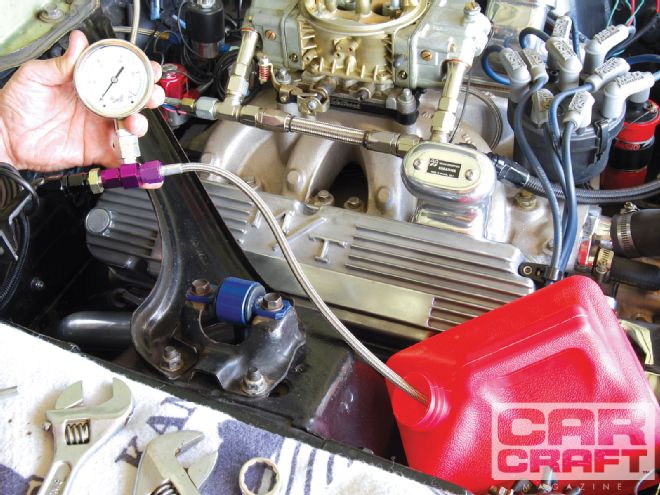
If you care about how nitrous and gasoline combine to make excellent power, this story is for you. This is not revolutionary information-but it is one of the best ways to keep your nitrous engine healthy and powerful.
All nitrous systems are designed to use a combination of fuel and nitrous jets that are based on specific nitrous and fuel pressures. This is because reducing either fuel or nitrous pressure also lowers total flow. The opposite is also true: The same jet size will flow more fuel (or nitrous) at a higher pressure. This is why fuel pressure is so critical.
With a closed-end or dead-head nitrous fuel system, the fuel pump pushes fuel up against a closed valve when the fuel solenoid is not activated, which increases the line pressure, causing what is called fuel pressure creep. Most fuel pumps have an internal bypass that is set to a given pressure, which is usually higher than the nitrous fuel system flowing pressure. When the nitrous system is activated and the fuel solenoid opens, the pressure drops significantly. This is why nitrous fuel pressure must be set by creating system fuel flow. There is a cool tool from Zex that makes performing this test easy, so we chose to try it out on a small-block Mustang owned by Greg Smith. The car is equipped with a rear-mounted Holley blue pump and a 3/8-inch pickup in the tank connected by a -6 braided steel line up to the Holley fuel pressure regulator that is plumbed to the inlet side of the nitrous solenoid.
Measuring fuel pressure under simulated load conditions requires an accurate, high-quality gauge. The Zex kit uses an excellent Winters liquid-filled 0-15-psi gauge that is accurate to + or - 0.04 psi. The kit also comes with four fuel jets: 0.043, 0.064, 0.083, and 0.125 inch. Check it out.
PARTS LIST DESCRIPTION PN SOURCE PRICE Zex fuel flow kit 82244 Summit Racing $158.75